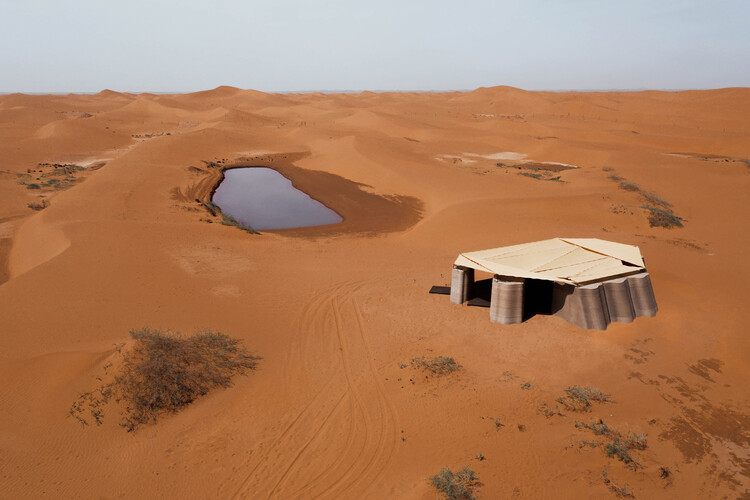 Desert Ark by designRESERVE. Image © ATDEF team
Desert Ark by designRESERVE. Image © ATDEF team
Share
Or
https://www.archdaily.com/1035781/grand-egyptian-museum-opens-and-torre-dei-conti-collapses-in-rome-this-weeks-review
This week’s architectural highlights traced the intersections between heritage, climate awareness, and contemporary design practice. As the 19th Venice Architecture Biennale approaches its closing, projects exploring collective intelligence and material experimentation offer reflections on small-scale responses to global challenges. In Egypt, the completion of the Grand Egyptian Museum marks a long-anticipated moment in cultural preservation, while new competition initiatives in Jordan extend this dialogue toward sacred and archaeological contexts. Complementing these developments, the recognition of Abdelwahed El-Wakil with the Tamayouz Lifetime Achievement Award highlights the continued influence of tradition-informed design across contemporary practice.
Between Climate Awareness and Collective Practice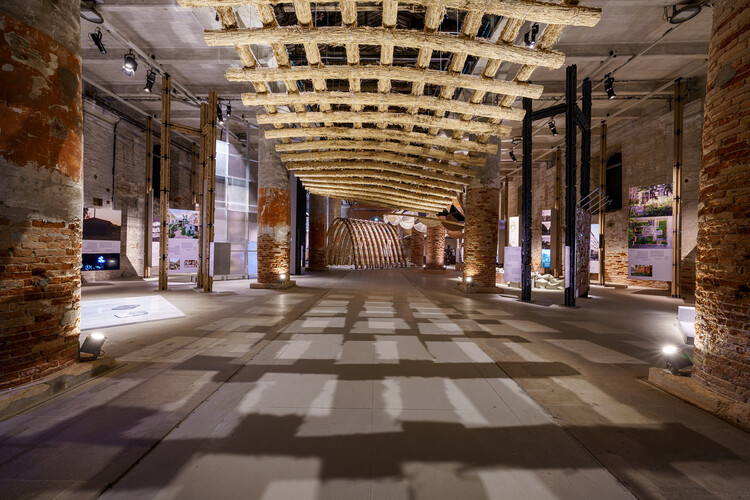 Arsenale exhibition overview. Image © Andrea Avezzù, Courtesy of la Biennale di Venezia
Arsenale exhibition overview. Image © Andrea Avezzù, Courtesy of la Biennale di Venezia
As the 19th Venice Architecture Biennale approaches its closing, its central theme, “Intelligens. Natural. Artificial. Collective,” continues to frame reflections on how design can respond to accelerating environmental challenges. The final months of the exhibition highlight small-scale interventions and collaborative models that link material research with ecological and social awareness. Installations such as Terms and Conditions, Ancient Future: Bridging Bhutan’s Tradition and Innovation, and 10,000 Hours of Care illustrate a shared pursuit of adaptive and collective intelligence, rethinking craftsmanship, technology, and energy use as part of architecture’s response to global crises. Together, these works highlight how experimentation across disciplines can inform broader conversations about sustainability and resilience within architectural practice.
Related Article Small-Scale Solutions to Climate Challenges: 13 Highlighted Projects from the 19th Venice Architecture Biennale Heritage, Identity, and Continuity in the Middle East 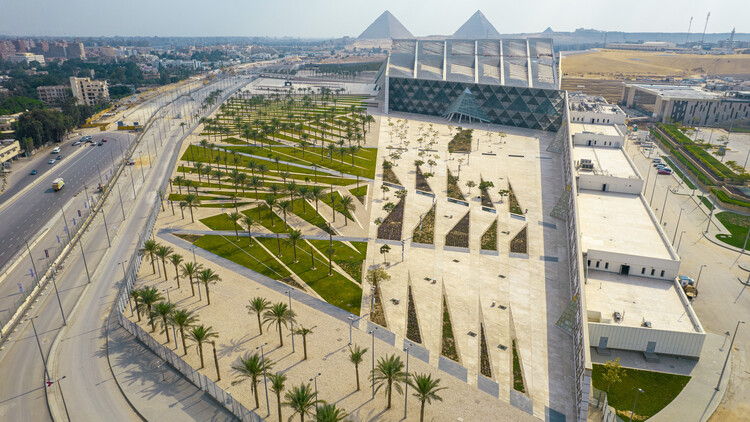 GEM Aerial View. Image Courtesy of Grand Egyptian Museum
GEM Aerial View. Image Courtesy of Grand Egyptian Museum
Across the Middle East, recent cultural projects and recognitions reflected an ongoing dialogue between heritage, identity, and contemporary design. In Cairo, the completion of the Grand Egyptian Museum marked the culmination of a two-decade effort to redefine how ancient artifacts and modern architecture coexist. Designed by Heneghan Peng Architects, the 500,000-square-meter complex aligns with the Giza Plateau‘s topography and the pyramids beyond, creating a spatial continuity between past and present. With exhibition design by Atelier Brückner, the museum integrates research, education, and conservation facilities, offering a sustainable framework for preserving and reinterpreting Egypt‘s archaeological legacy.
In Jordan, the shortlist for the Museum of Jesus’ Baptism competition extended this conversation into sacred and cultural contexts. The seven finalist teams, among them AAU Anastas, Níall McLaughlin Architects, and Tatiana Bilbao ESTUDIO, propose designs that combine reflection, education, and landscape integration for a site of deep spiritual and historical resonance. Complementing these initiatives, the recognition of Abdelwahed El-Wakil with the 2025 Tamayouz Lifetime Achievement Award reaffirmed the enduring relevance of traditional and vernacular approaches within contemporary practice, underscoring how architecture in the region continues to evolve through the intersection of memory, identity, and innovation.
On The Radar Historic Tower Torre dei Conti Collapses in Rome 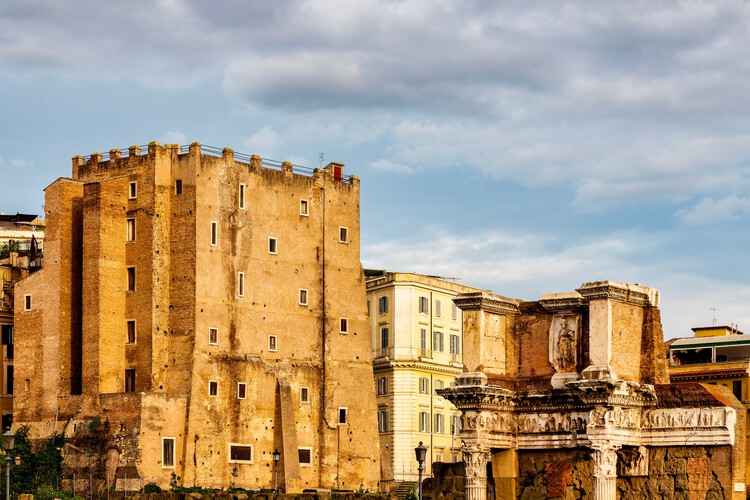 The Torre dei Conti. Image © Only Fabrizio via Shutterstock
The Torre dei Conti. Image © Only Fabrizio via Shutterstock
In Rome, the Torre dei Conti, a medieval tower located near the Colosseum, partially collapsed on 3 November, while undergoing restoration works, resulting in the death of one construction worker and injuries to another. The 13th-century structure, built under Pope Innocent III around 1203 as a fortified residence for his brother Riccardo Conti, had been closed to the public since 2007 and was undergoing a EU-funded renovation. Authorities have yet to determine the cause of the collapse, though early reports suggest a potential internal structural failure. The incident has prompted renewed discussions about safety and preservation practices for Italy’s historical heritage sites.
Bjarke Ingels Group Designs a New Residential Quarter in Abu Dhabi’s Saadiyat Cultural District 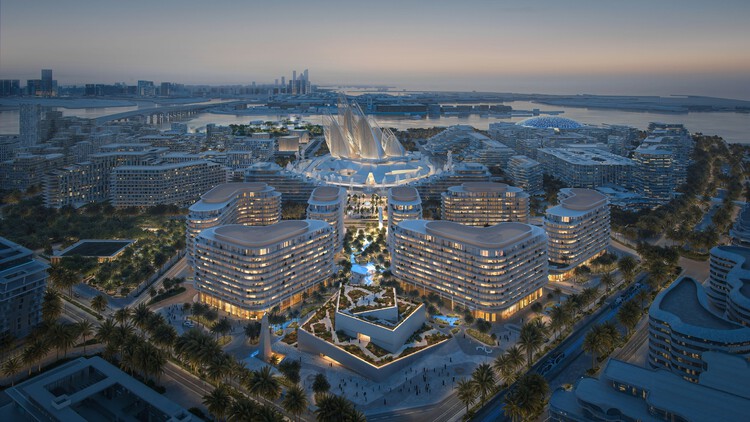 Row Saadiyat by Bjarke Ingels Group. Image Courtesy of Aldar
Row Saadiyat by Bjarke Ingels Group. Image Courtesy of Aldar
In Abu Dhabi, Bjarke Ingels Group has revealed The Row Saadiyat, a new residential quarter for Aldar Properties located within the Saadiyat Cultural District. Positioned beside the Zayed National Museum and within walking distance of Louvre Abu Dhabi and the future Guggenheim Abu Dhabi, the development comprises seven mid-rise buildings housing 315 apartments in its first phase. Defined by curving facades, shaded walkways, and air-conditioned bridges that connect to Saadiyat Grove and Mamsha Beach, the project aims to create a walkable environment adapted to the desert climate.
China’s First 3D-Printed Desert Structure by designRESERVE Demonstrates Low-Impact Construction in Extreme Climates  Desert Ark by designRESERVE. Image © ATDEF team
Desert Ark by designRESERVE. Image © ATDEF team
In Inner Mongolia‘s Tengger Desert, Beijing-based studio designRESERVE has completed Desert Ark, China‘s first 3D-printed concrete structure built in a desert environment. Commissioned by a local non-profit dedicated to reforestation, the project provides modular accommodation for volunteers working on ecological restoration at the desert’s edge. Comprising nine prefabricated concrete units assembled on site in just two days, the campsite offers living, dining, and support facilities arranged around a sheltered deck. Powered by off-grid solar systems and equipped with water-recycling systems, the structure operates as a fully self-sufficient field base. Recognized as a finalist at the Seoul Design Award, Desert Ark demonstrates a low-impact, resilient approach to construction in extreme environments and serves as a prototype for future sustainable and extraterrestrial habitats.
This article is part of our new This Week in Architecture series, bringing together featured articles this week and emerging stories shaping the conversation right now. Explore more architecture news, projects, and insights on ArchDaily.

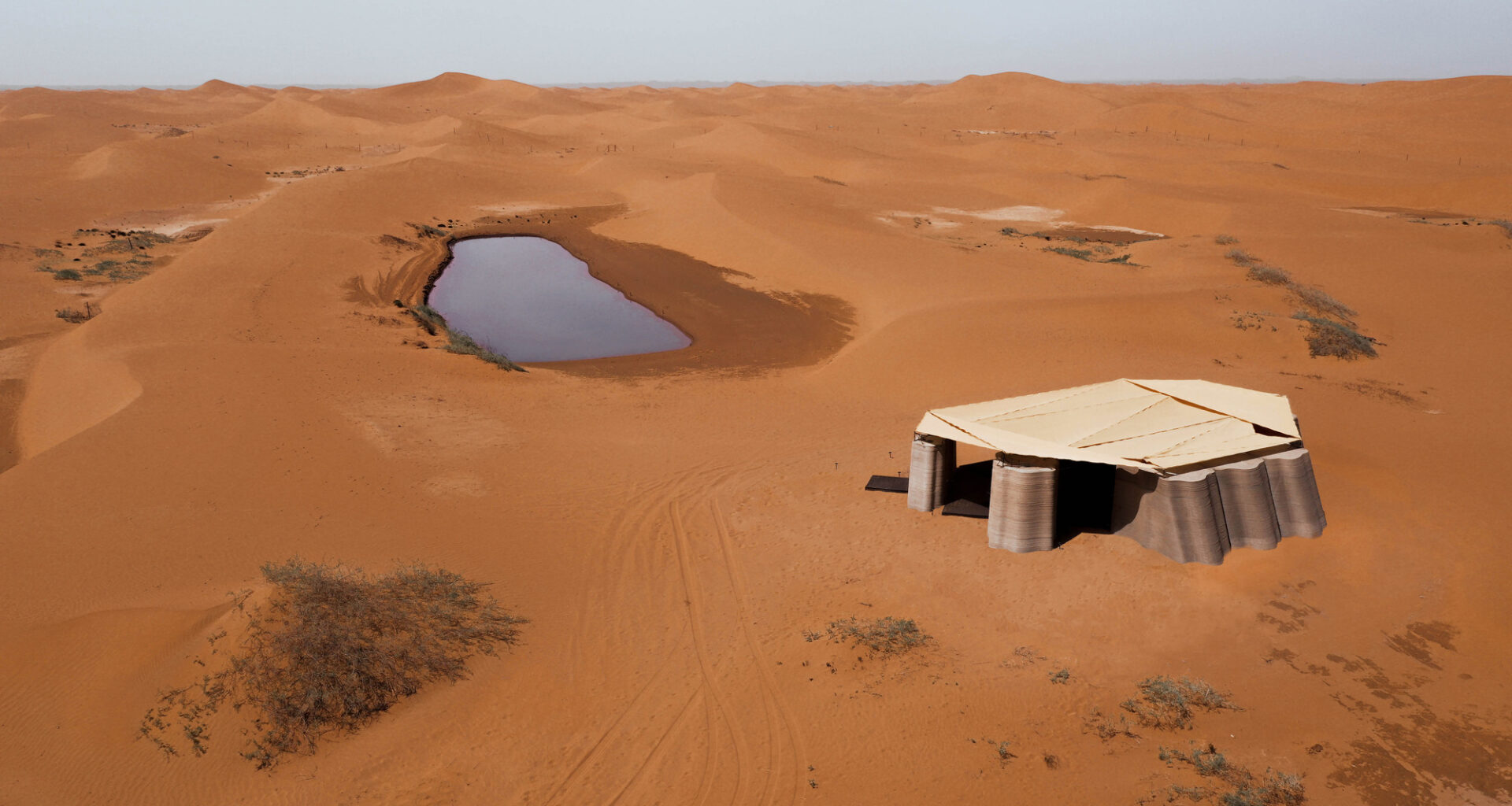
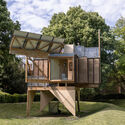
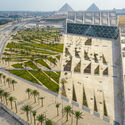

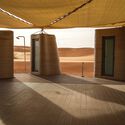
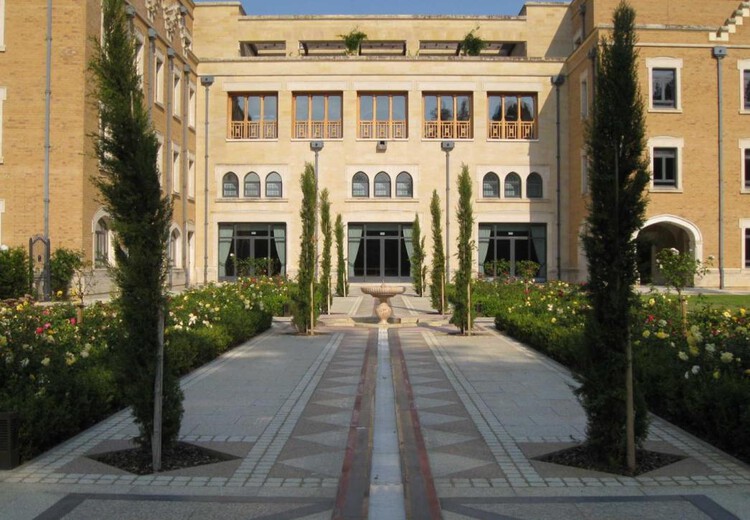 Oxford Centre for Islamic Studies by Abdelwahed El-Wakil. Image Courtesy of Tamayouz Excellence Award
Oxford Centre for Islamic Studies by Abdelwahed El-Wakil. Image Courtesy of Tamayouz Excellence Award